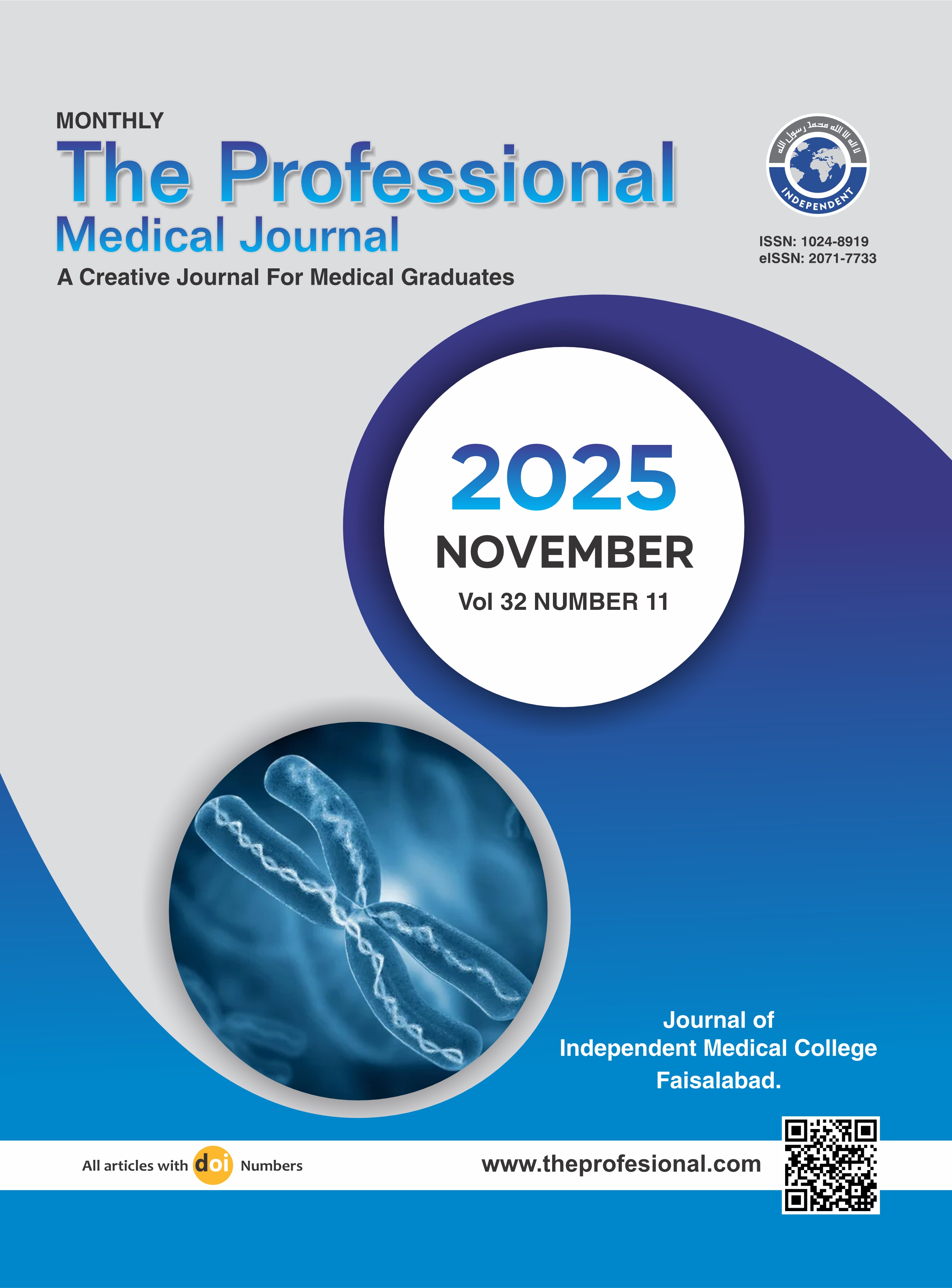Frequency and outcome of hypomagnesamia in children admitted in PICU of National Institute of Child Health, Karachi, Pakistan.
DOI:
https://doi.org/10.29309/TPMJ/2025.32.11.9890Keywords:
Hypomagnesemia, Magnesium, Mechanical Ventilation, Mortality, PICUAbstract
Objective: To determine the frequency of hypomagnesamia (HM) in children admitted to pediatric intensive care unit (PICU), and its association with outcomes. Study Design: Cross-sectional study. Setting: The PICU of National Institute of Child Health (NICH), Karachi, Pakistan. Period: October 2024 to March 2025. Methods: A total of 194 children between 1 month and 12 years admitted to the PICU were analyzed. Serum magnesium levels < 1.5 mg/dL were labeled as HM. Outcomes were recorded in the form of children requiring mechanical ventilation, duration of PICU stay, and discharged or mortality. Data analysis was performed using IBM-SPSS Statistics, Version 26.0. Chi-square test, or independent sample test (as appropriate) were applied to see the impact of effect modifiers on HM. For all statistical tests, p<0.05 as significant. Results: In a total of 194 children, 160 (54.6%) were female, and the mean age was 5.83±3.45 years. HM was identified in 91 (46.9%) children. HM was having significant association with sepsis (44.0% vs. 17.5%, p=0.032), severe acute malnutrition (40.7% vs. 29.1%, p<0.001), and hypocalcemia (33.0% vs. 16.5%, p=0.008). The mean duration of mechanical ventilation (p=0.025), and PICU stay (p=0.019) were significantly higher in children with HM. HM was significantly associated with mortality (14.3% vs. 2.9%, p=0.004). Conclusion: HM is a frequent electrolyte disturbance in PICU, linked with sepsis, and malnutrition. HM is associated with greater need for mechanical ventilation, prolonged PICU stay, and increased mortality.
Downloads
Published
Issue
Section
License
Copyright (c) 2025 The Professional Medical Journal

This work is licensed under a Creative Commons Attribution-NonCommercial 4.0 International License.


